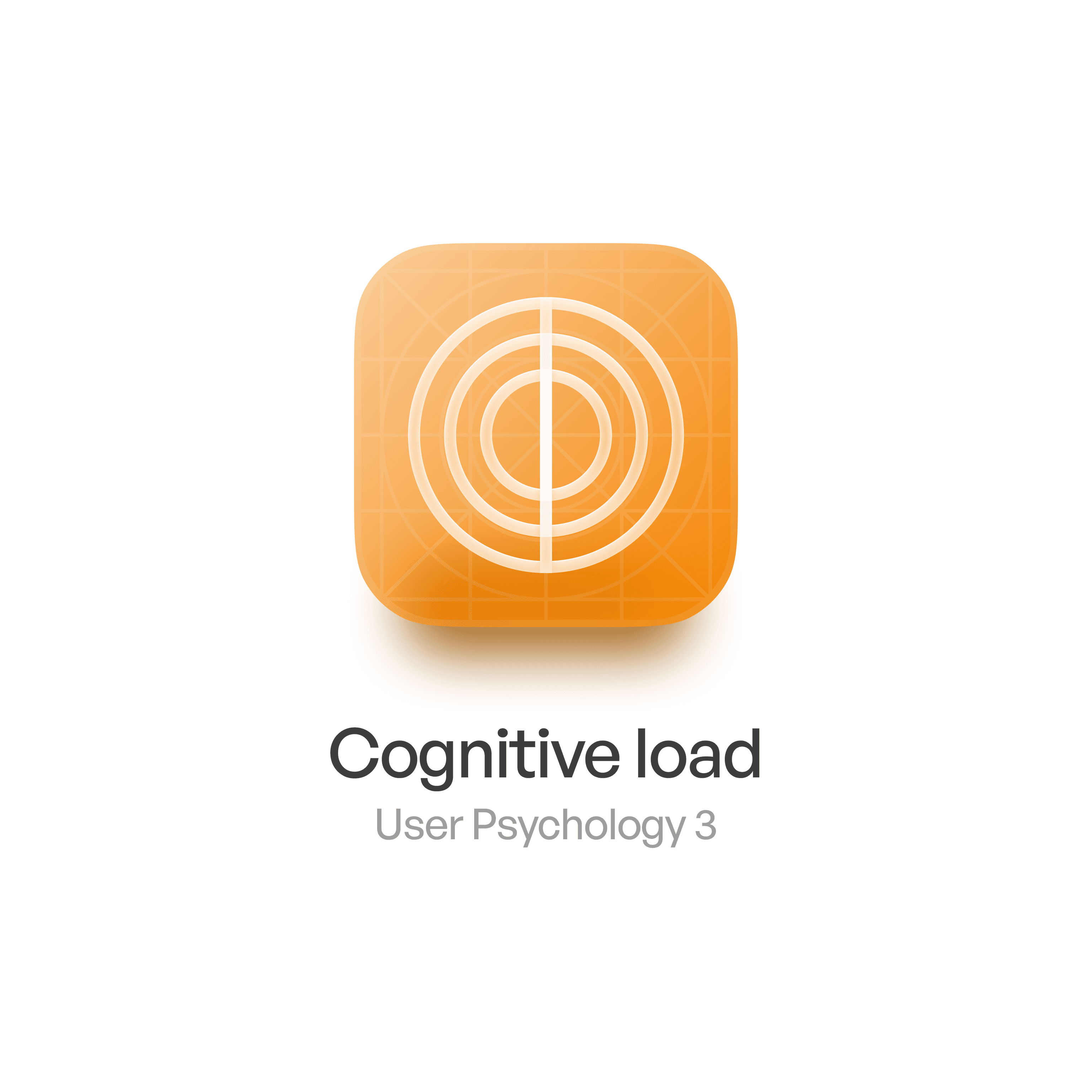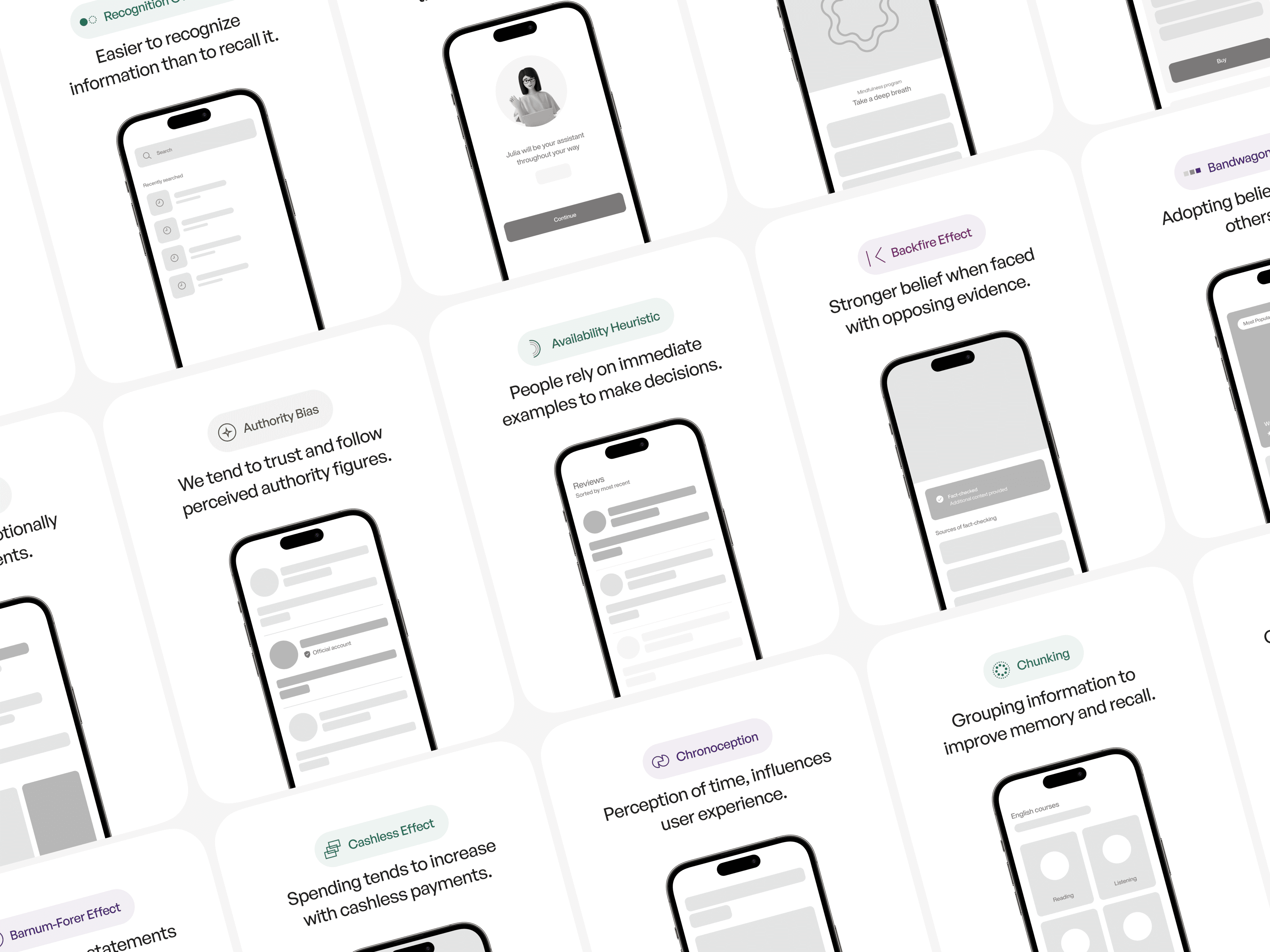Cognitive Load in UX Design: How Simplicity Improves Clarity & Conversions
Nov 28, 2025

Sometimes a product doesn’t fail because it’s missing features —
it fails because it exhausts the mind.
We’ve all used products that feel “heavy,” even if they look beautiful. And we’ve all used products that feel effortless — screens that guide us, decisions that feel obvious, flows that almost disappear.
That feeling has a name: cognitive load.
And mastering it is one of the most powerful skills a designer can develop.
1. What Is Cognitive Load? (Definition)
Cognitive load is the mental effort required to understand or interact with a product.
In UX, it shows up when a screen:
asks the user to make too many decisions
presents too much information at once
uses patterns the user doesn’t expect
hides the important action behind noise
When load increases, conversion drops, errors rise, and users abandon.
2. The Psychology Behind It
The human brain has a limited working memory — famously described by Miller’s Law. We can process only a few things at once before the system overloads.
Cognitive load comes from three sources:
Intrinsic load — how complex the task itself is
Extraneous load — unnecessary clutter or poor design
Germane load — the effort spent understanding the structure (like a pattern or flow)
Designers can’t change intrinsic load (mortgage forms will always be complex).
But we can almost completely eliminate extraneous load — the load caused by bad design.
And that’s where great UX wins.
3. Why Cognitive Load Matters in UX
Because users don’t “read” interfaces — they scan, jump, and react.
When cognitive load is high:
users drop during onboarding
users skip steps
users choose the wrong option
users lose trust
users feel “tired” without knowing why
When cognitive load is low:
flows feel intuitive
the product feels “clean”
users feel smart
conversion increases
retention increases
satisfaction increases
Lowering cognitive load doesn’t just make your UI prettier —
it makes your product psychologically easier.

4. Real-World Example (A Simple One)
Imagine a property-search screen that shows:
12 filters
a map
price slider
location input
sorting
categories
a large banner
and 3 floating buttons
This forces the user to interpret too many signals at once.
Now imagine the same screen:
one primary action
collapsible filters
clear spacing
progressive disclosure
a single dominant affordance
It feels better instantly.
Not because it has fewer features — but because it demands less cognitive effort.
5. Common Mistakes (And How to Avoid Them)
❌ Mistake 1: Showing everything at once
Fix: Use progressive disclosure. Reveal only what’s needed now.
❌ Mistake 2: Overloading the user with choices
Fix: Apply Hick’s Law — fewer visible choices → faster decisions.
❌ Mistake 3: Inconsistent patterns
Fix: Align layouts, spacing, and interaction patterns using a design system.
❌ Mistake 4: Walls of text
Fix: Chunk content. Use headings, spacing, and scannable structure.
❌ Mistake 5: Visual clutter
Fix: Create hierarchy: one dominant action, secondary actions, intentional spacing.
6. How to Reduce Cognitive Load in Your Design (Practical Tips)
1. Start with one question: “What does the user need to know right now?”
Everything else is noise.
2. Keep the primary action visually dominant
Make the user’s next step obvious.
3. Remove one thing from every screen
A good rule: if everything feels important, nothing is.
4. Use mental models
Match patterns users already understand — it eliminates learning cost.
5. Apply processing fluency
Design for effortless clarity.
Simple ≠ minimal; simple = easy to understand.
7. Key Takeaways
Cognitive load determines how “heavy” or “light” your product feels
Users avoid mental effort — reducing load increases conversion
Spacing, hierarchy, patterns, and progressive disclosure are your best tools
Simplicity isn’t visual — it’s psychological
The best interfaces feel obvious, not clever
📘 Want to Go Deeper Into UX Psychology?

If you want to learn 100+ design psychology principles with examples, visuals, and step-by-step application guides, you can find them in
User Psychology 3 — our complete handbook for applying psychology in modern digital products.